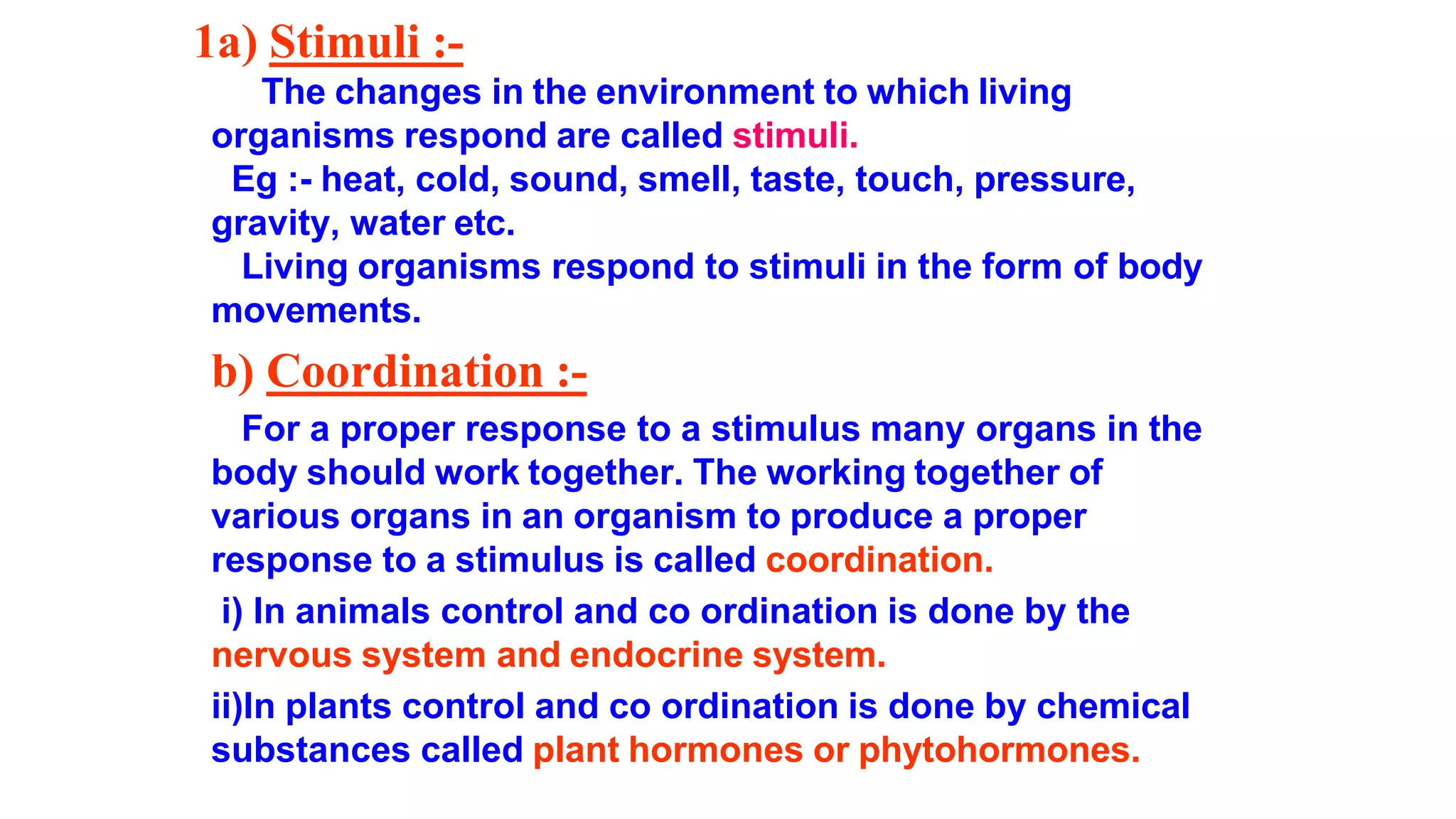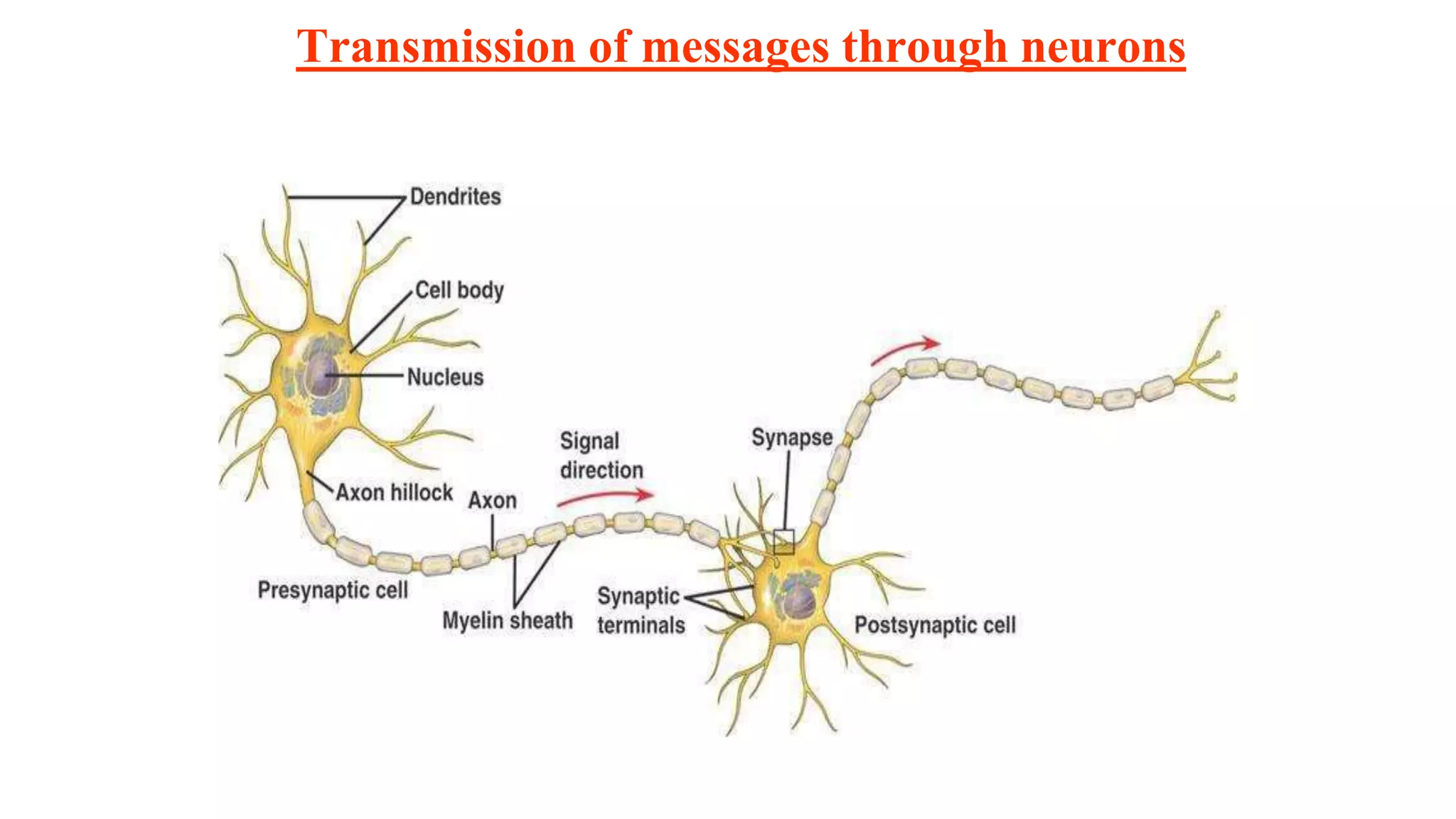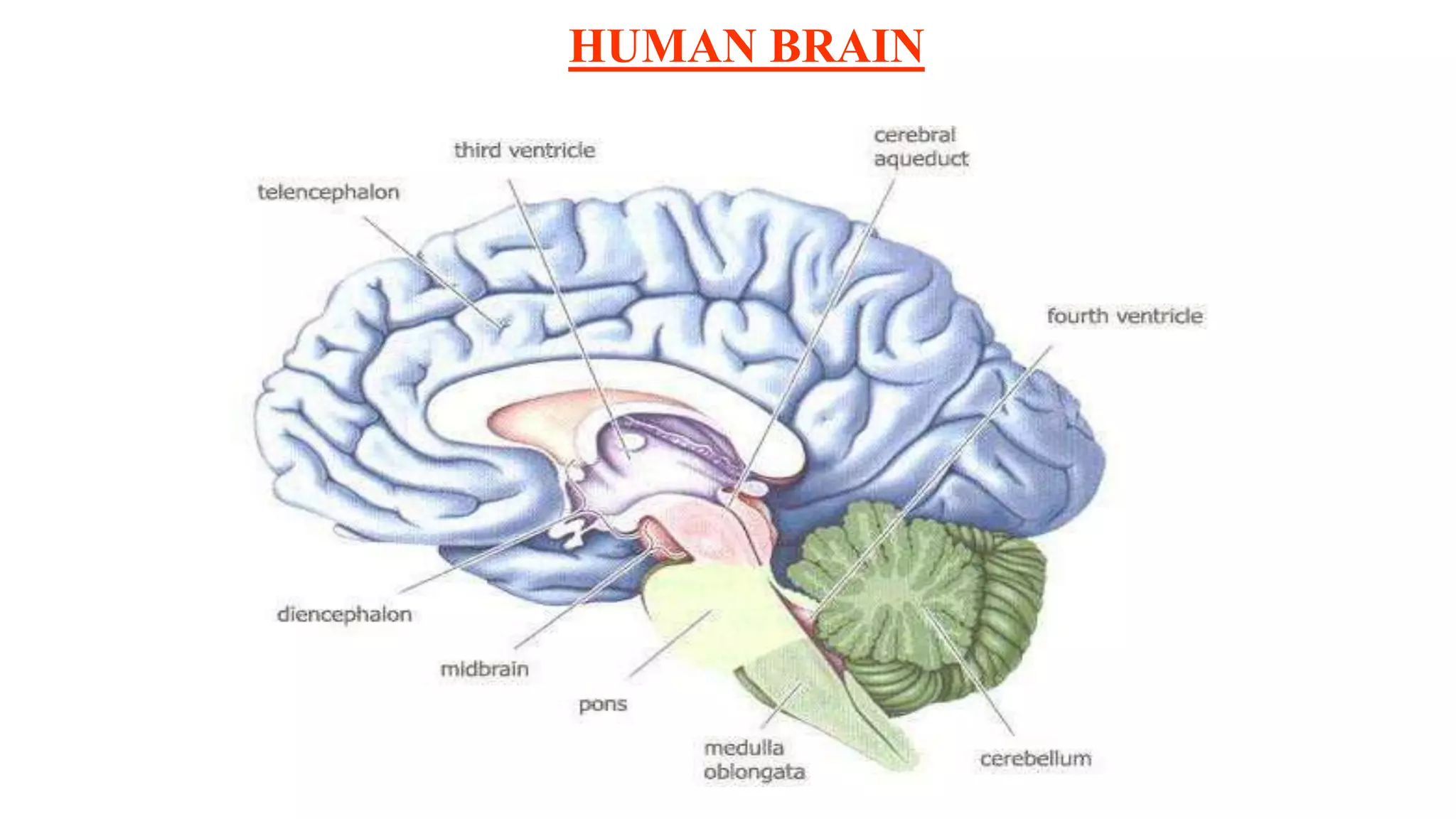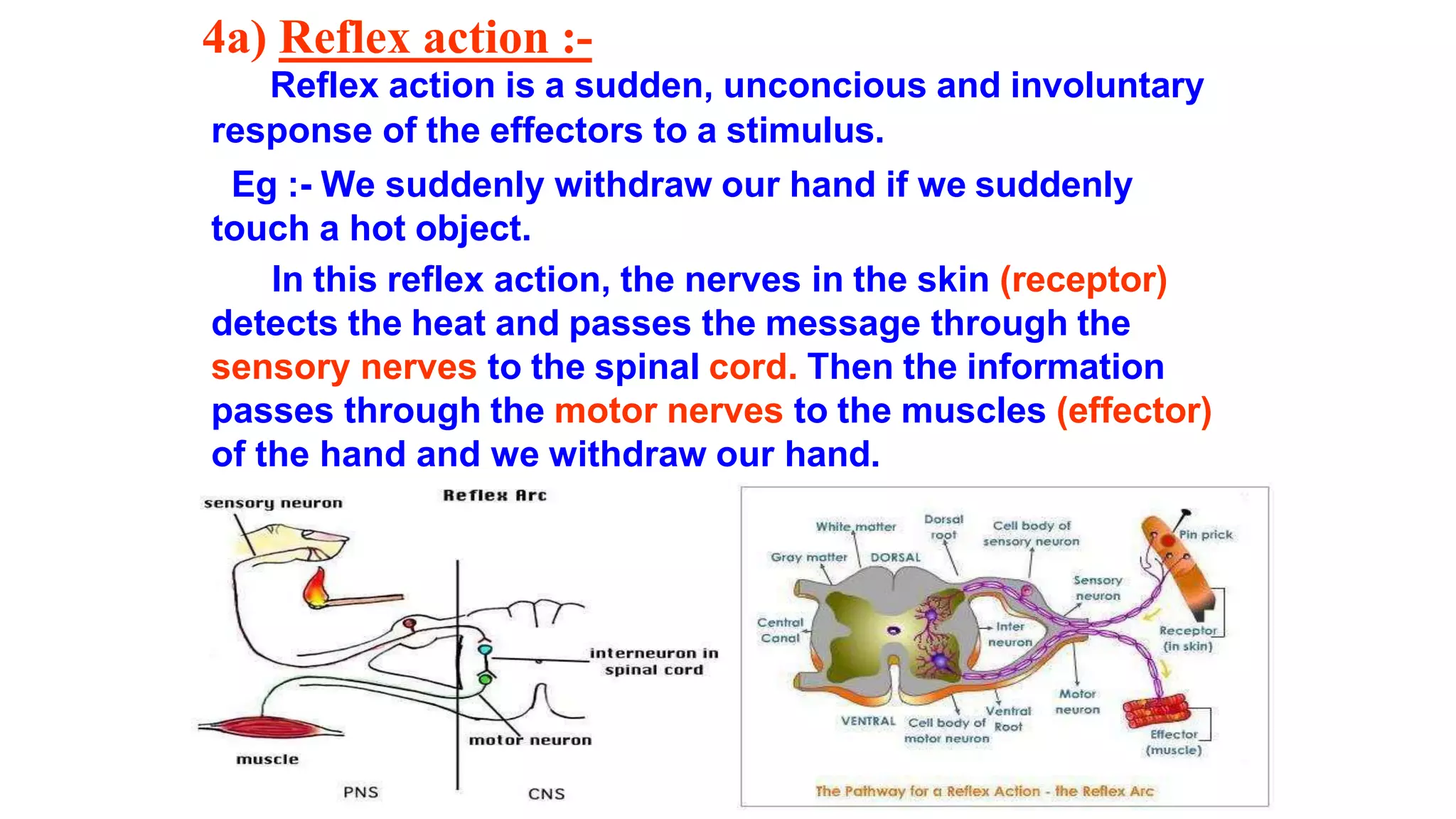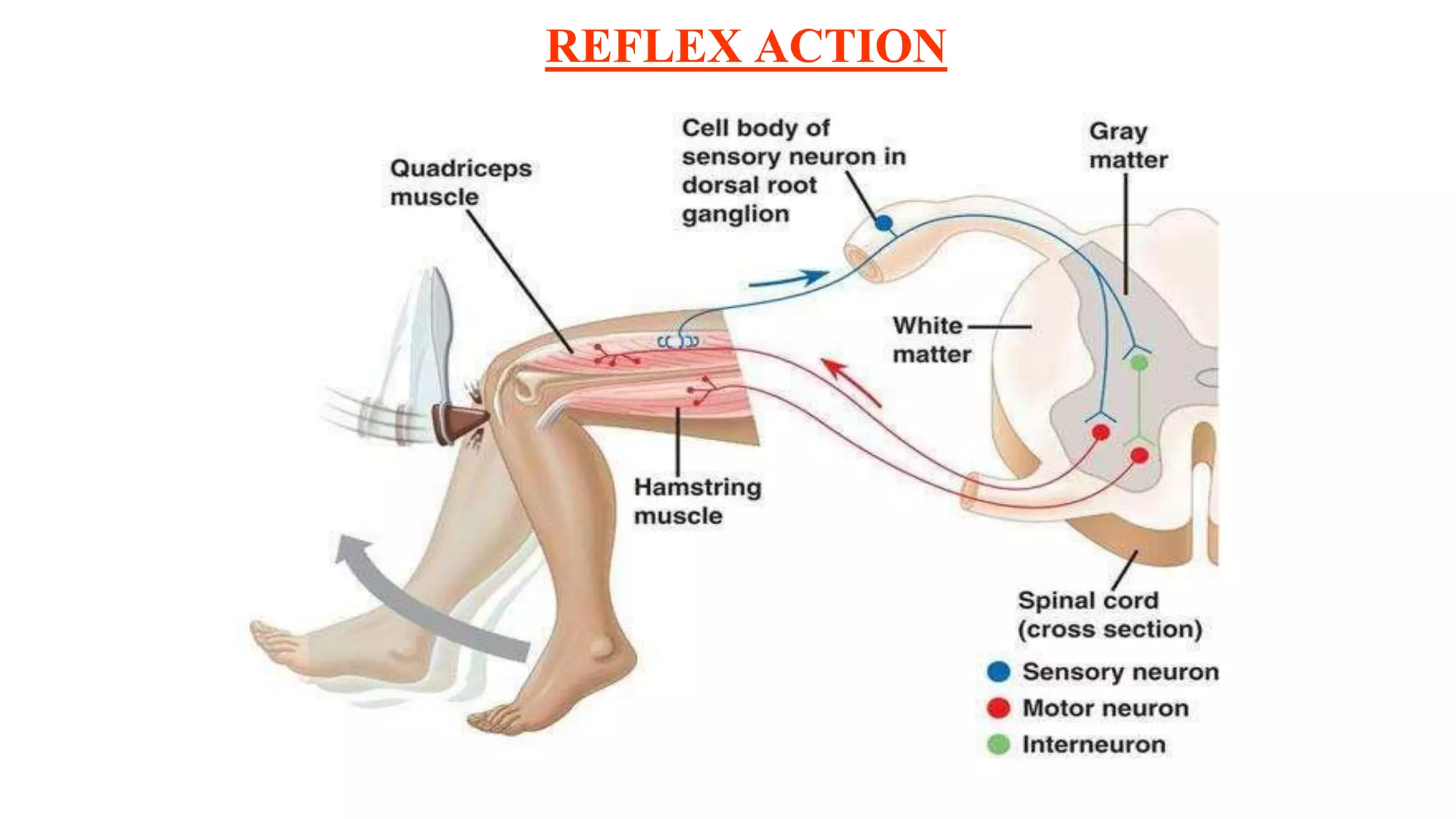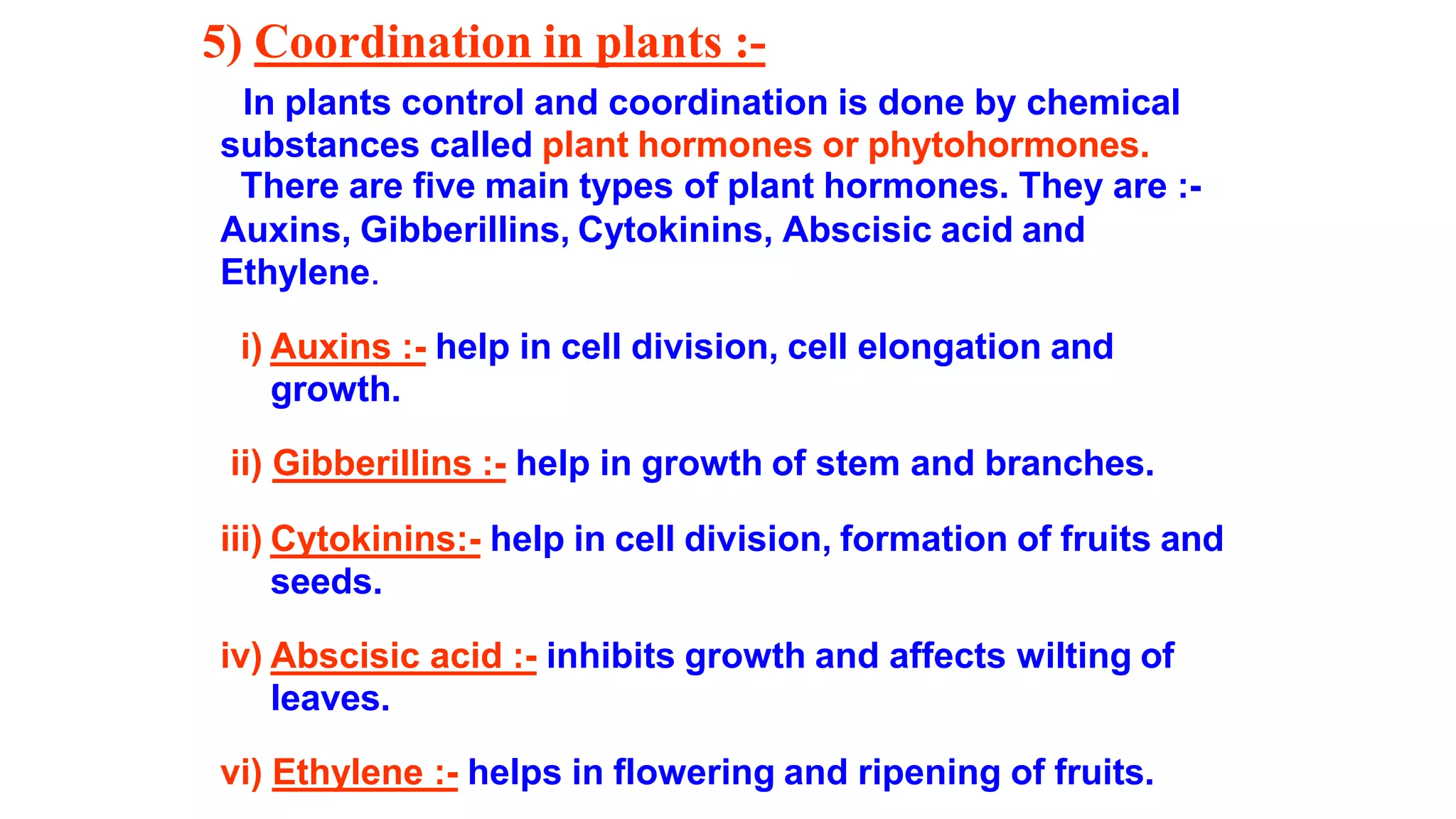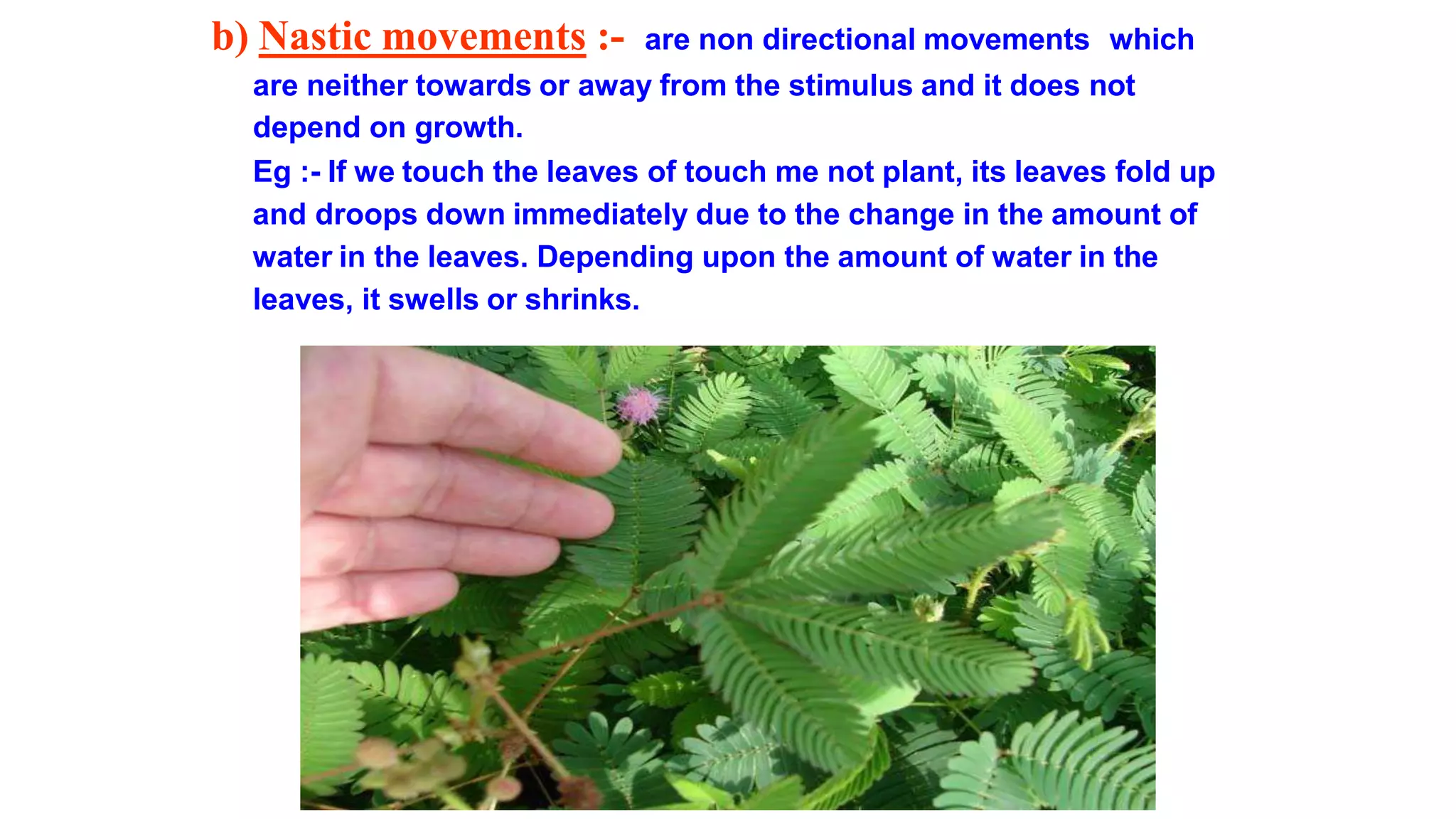The document discusses control and coordination in living organisms. It describes how stimuli are received by receptors and responses are carried out by effectors. In animals, the nervous system and endocrine system work together to coordinate responses. The nervous system consists of neurons that transmit electrochemical signals through sensory, motor and interneurons. The human nervous system contains the central nervous system (brain and spinal cord) and peripheral nervous system. Reflex actions provide involuntary, rapid responses via a reflex arc. In plants, coordination occurs through plant hormones such as auxins and gibberellins, which influence growth and movements like tropisms in response to stimuli. The endocrine system in humans also helps control and coordinate functions through glands like the adrenals,

